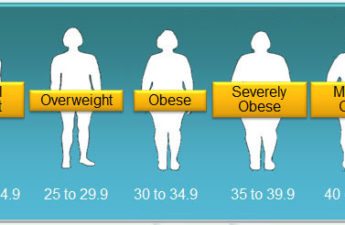
By Dr. Jeff Duchin, Health Officer for Public Health – Seattle & King County
Firearm-related injury and death, from suicide to accidental injury and homicide – is a major public health problem and a leading cause of premature death in King County and nationally. In 2016, 663 adults and 20 children died from a firearm injury in Washington state, including 144 adults and 7 children from King County.
Firearm-related injuries have very high personal and financial costs to individuals, families and society – and that’s why prevention is essential. In 2015, the cost of firearm fatalities alone (not counting non-fatal injuries) in King County was almost $200 million from medical costs and lost productivity, and nationally the cost is in the hundreds of billions of dollars each year.
Although recent mass shootings have highlighted the need to more effectively address firearm-related injury and deaths, the fact is that that most firearm deaths are a result of suicide, followed by homicide and accidental deaths. Suicide is one of the top 10 causes of death overall in KC and the 2nd leading cause of death in people 15 – 44 years of age. In Washington state, firearm suicides are responsible for 75% of all firearm deaths; about half of all suicide deaths are caused by firearm injury. Firearm homicides disproportionately affect young men who are African American and Native American/Alaska Natives.
Healthcare providers have firsthand experience with the devastating impact firearm injuries and deaths have on individuals, families, and our communities. In a survey of internal medicine physicians, a majority reported having a patient that was injured or killed by a firearm.
For that reason, Public Health is joining with leading medical professional associations to form a new collaboration with a renewed commitment to decrease firearm-related injury and deaths by working together and using a public health approach.
Prevention is the core of a public health approach, and firearm injuries and deaths canbe prevented. We must address prevention of firearm-related injuries in the same way we do for other types of injuries, poisonings, and infectious and chronic diseases, using a public health approach that includes:
- Screening to identify patients with risk factors for firearm-related injury
- Educating patients and families about risk factors, firearm safety and injury prevention as we do for other diseases and causes of injury – gun owners and non-gun owners alike understand the importance of firearm safety
- Gathering data and conducting research on risk and protective factors for firearm related injury and death in order to make evidence-based recommendations and strategies
- Promoting the adoption of successful prevention strategies, including those addressing upstream drivers of violence, such as childhood abuse, neglect and trauma, poverty, substance use disorders, disrupted families and communities, and being a victim of violence
- Fostering multidisciplinary and community collaborations with stakeholders interested in reducing firearm-related injury and death, including gun-owners
The medical community has an important role in this work. You can read our joint statement, which includes a description of our approach and examples of actions healthcare providers can take to reduce firearm-related injury and death, at http://www.kingcounty.gov/firearm-injuries-ph.
This collaboration among healthcare provider professional organizations is the first of many steps local and statewide medical professionals can take together to reduce firearm injury and death in our communities. We invite other healthcare professional organizations to join us by endorsing our statement and/or participating in our future work.
The statement has been developed in collaboration with and signed by the following:
Harborview Injury Prevention and Research Center
The large problem of gun violence, as it affects children and adolescents in the U.S., can be solved with an interdisciplinary group of scientists coming together to bring their individual expertise to develop solutions to this complex issue. — Frederick P. Rivara, M.D., MPH, professor of pediatrics at the University of Washington School of Medicine and researcher at Harborview Injury Prevention and Research Center.At Harborview our commitment to preventing gun violence grows from caring for each child or adult struggling to survive a gunshot injury. The fatal decisions of young people are startlingly impulsive. That’s why many accidental shootings and suicides are preventable. Simple actions matter: keep guns out of the home, or safely store and lock them up. — Beth Ebel, MD, MSc, MPH, Harborview Injury Prevention and Research Center; Professor of Pediatrics at the University of Washington and Seattle Children’s Hospital; Adjunct Professor of Epidemiology, University of Washington
Washington Chapter of the American Academy of Pediatrics
“Pediatric health care providers see the impact of gun violence on children firsthand,” says Dr. Elizabeth Meade, a pediatric hospitalist and vice president of the Washington Chapter of the American Academy of Pediatrics. “We understand that children and adolescents can be impulsive, and that all too often simply having access to a gun leads to a tragic outcome. We must work with families to ensure all firearms are stored safely to protect children from injury and death.”Washington Chapter of the American College of Physicians
As an organization representing physicians who have first-hand experience with the devastating impact on the health of our patients resulting from firearms-related injuries and deaths, we have a responsibility to be part of the solution in trying to mitigate firearms-related tragedies. — Leah Marcotte, MD, Executive Council, Washington Chapter of the American College of Physicians
Washington State Medical Association
The Washington State Medical Association and our member physicians are on the front lines of public health and patient care. It’s doctors whose hands probe the wounds, and seek to heal the bodies and mend the minds of those affected by gun violence. That’s why in addition to patient education and risk counseling, we also call on our peers to increase observance, attentiveness and education around the mental health of patients to reduce their risk of harm, we support continued investment in behavioral health, and we advocate for safe gun storage practices and common sense approaches to reduce gun-related injuries and fatalities. We can all agree that injuries and deaths from gun violence are preventable. The Washington State Medical Association supports this effort, and pledges to continue our efforts to find solutions to this growing public health crisis. — WSMA President Donna Smith, MDWashington State Nurses Association
“As providers, we are trained to screen and counsel our patients on how to stay healthy and safe. We advise on things like helmet use and tobacco use, and we screen our patients for depression. Firearm-related injury and death is a public health issue as well, and health care providers have a responsibility to be part of the solution by respectfully screening and educating about gun safety and gun violence prevention,” said Jan Bussert, BSN, RN, President of the Washington State Nurses Association. “Nurses see firsthand the aftermath of gun-related injuries and death, and we fully support a balanced public health approach to addressing this national epidemic.”King County Medical Society
The King County Medical Society recognizes the immense burden of gun violence on the City of Seattle, Washington state, and our nation at large, and strongly supports public health effort to reduce gun violence, safer gun storage, education about gun safety, and the involvement of physicians in tackling this major issue. — Dr. Amish Dave, Co-Chair, Public and Mental Health Committee, King County Medical Society
Washington State Trauma and EMS Steering Committee
Washington State has one of the best organized trauma systems and emergency medical response teams with significantly better survival rates. We recognize prevention is an important part of any mature trauma system, and the Washington State Trauma and EMS Steering Committee supports sensible measures to decrease gun violence. — Sam Arbabi, MD, MPH, Professor of Surgery, UW School of Medicine
Public Health – Seattle & King County
Washington Chapter of the American Academy of Family Physicians
Washington Chapter of the American College of Physicians
Washington Chapter of the American College of Emergency Physicians
Washington State Trauma and EMS Steering Committee
Originally posted on June 19, 2018.


